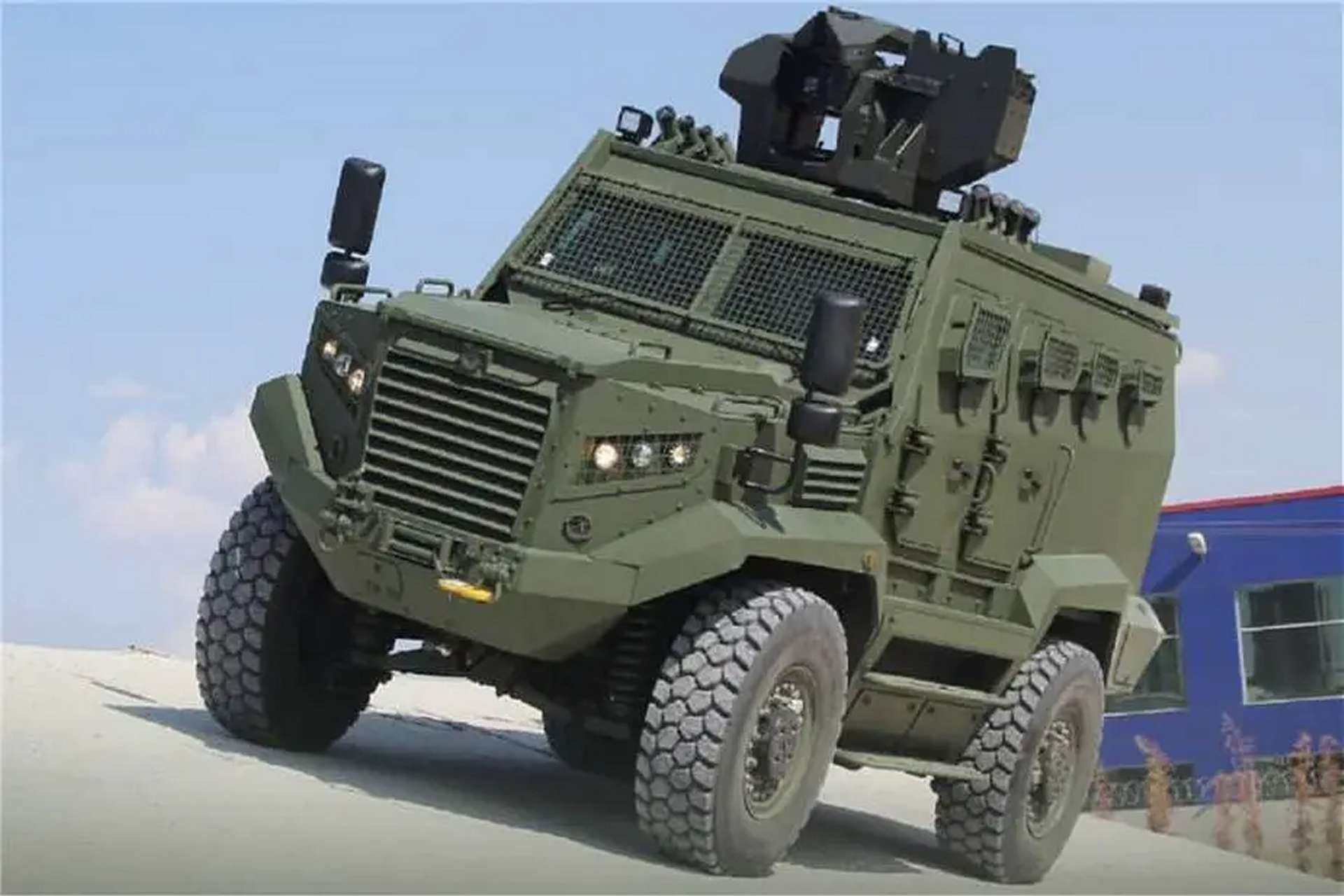Breaking News
Congo strengthens army capabilities with 185 Turkish-made HIZIR 4x4 Armored Personnel Carrier Vehicles to Fight M23.
The Democratic Republic of the Congo (DRC) has significantly strengthened its military capabilities by acquiring Hizir 4X4 armored vehicles from the renowned Turkish manufacturer Katmerciler. This contract, signed in 2020 and estimated at $75 million for the acquisition of 185 Hizir MRAP vehicles, has finally been completed, marking a crucial step in the country’s efforts to combat rebel groups and enhance national security. An initial shipment of 40 armored vehicles was delivered by sea to Matadi at the beginning of April 2024.
Follow Army Recognition on Google News at this link

Türkish-Made Katmerciler Hizir 4X4 MRAP vehicle (Picture source: Katmerciler)
Since 2020, the DRC has been awaiting the delivery of these vehicles to bolster its army, which has been severely tested by the battles against the M23 rebels in the east of the country. Numerous obstacles that delayed the finalization of this contract have finally been overcome, allowing Kinshasa to receive these valuable pieces of equipment.
The Hizir, already in service with the Turkish army, is renowned for its robustness and versatility. This vehicle, capable of transporting nine people, benefits from a high level of ballistic and mine protection. With a gross weight of 16 tons and a V-hull for protection against landmines and improvised explosive devices, the Hizir is powered by a 400-horsepower Cummins diesel engine. It can reach a top speed of 110 km/h and has a range of 700 kilometers. The Hizir can be configured for various missions, including combat, command and control, CBRN defense, weapons transport, ambulance services, reconnaissance, and border security. It can also be equipped with an Aselsan SARP turret with machine guns or an automatic grenade launcher.
Africa has already adopted the Hizir, with countries like The Gambia, Kenya, and Uganda integrating this vehicle into their armed forces. The DRC now joins this list, thereby strengthening its military capabilities in a region marked by instability.
This acquisition comes amid a significant increase in the DRC's military spending. According to the Stockholm International Peace Research Institute (SIPRI), the DRC recorded the largest increase in military spending in the world in 2023, with a rise of 105%, even surpassing Ukraine. This increase, bringing expenditures to $794 million, reflects the government’s efforts to address multiple security threats, including heightened tensions with Rwanda and clashes with non-state armed groups.
In addition to vehicles from Katmerciler, the DRC has diversified its sources of military equipment. South Africa has become a key supplier, with Paramount Group delivering 25 Maatla armored personnel carriers (APCs) to the Congolese police and 20 Mbombe 4 APCs to the army. Additionally, the DRC has acquired six Mwari intelligence, surveillance, and reconnaissance (ISR) platforms from Paramount. Furthermore, in 2023, the DRC strengthened its arsenal with the acquisition of nine CH-4 unmanned aerial vehicles (UAVs) from the China Aerospace Science and Technology Corporation, as well as 30 MCAV-20 armored vehicles from the United Arab Emirates. Other recent acquisitions include various new small arms and light weapons from different suppliers, as well as seven second-hand OH-58 and UH-1H helicopters from the United States received in 2019.
This military build-up comes as the United Nations peacekeeping mission in the DRC is being replaced by the Southern African Development Community (SADC) Mission in Mozambique (SAMIDRC), which includes South African troops.
The Hizir armored vehicle from Katmerciler is particularly suited to the challenging terrain in the Kivu provinces. Designed for high performance in extreme environments, the Hizir excels in both rural and urban areas thanks to its robust engine, fully independent suspension with coil springs and shock absorbers, and its V-hull monocoque chassis. This configuration provides increased protection against landmines and improvised explosive devices (IEDs), which are common in the conflicts in Kivu. With a range of 700 km and a top speed of 110 km/h, it allows for rapid and efficient movement on often impassable roads and rough terrain. Moreover, its ability to be configured for various missions, such as reconnaissance and border security, makes it a versatile asset for the Congolese army in this unstable region.


























